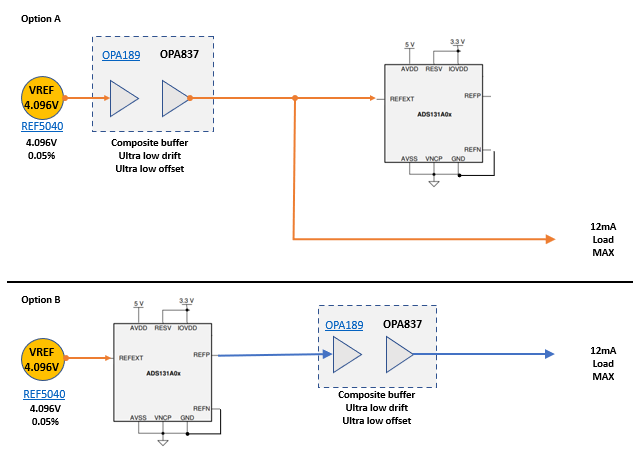Other Parts Discussed in Thread: OPA189, OPA837
Hi Support Team,
For the ADS131A04 reference, I understand that VREF is supplied internally and can be set to either 2.442V or 4.0V.
by default, VREF is externally supplied via REFEXT. In both cases, the reference is internally buffered...
My question, is it possible to bypass the internal buffer and supply external VREF @ REFP pin?
The reason I ask is I am using a precision 0.05%, ultra low noise (< 10 nV/vHz), low drift (< 5 PPM/°C)external reference and a composite buffer circuit.
However, I am afraid the external buffer performance is limited by the internal buffer.
The application calls for 1% and 0.1% FS accuracy pre/post calibration. Inputs are uni-polar {0v-4V}
Best,
AJ


